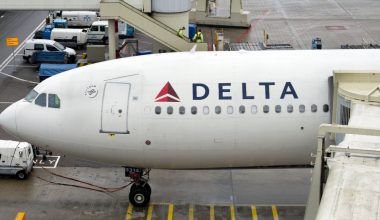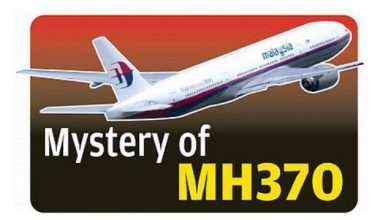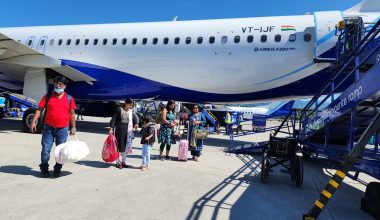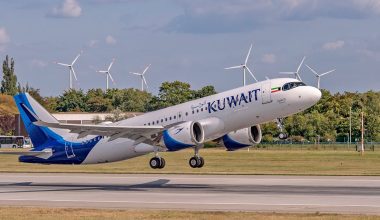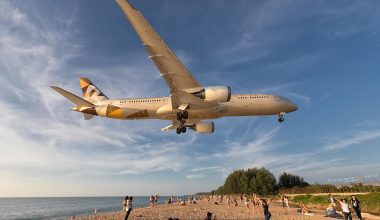Drukair, the flag carrier of Bhutan, facilitates the nation’s tourism development by providing much-needed air connectivity for visitors. It ferries international travelers to/from ‘Druk Yul’ (the local name for Bhutan) from its hub at Paro Airport.
Birth of state-owned Drukair
Drukair was founded on April 5, 1981, through a Royal Proclamation by His Majesty King Jigme Signye Wangchuck. Before its inception, there was no air service in the country. The birth of Drukair marked the dawn of a bright new era for the landlocked South Asian Kingdom.
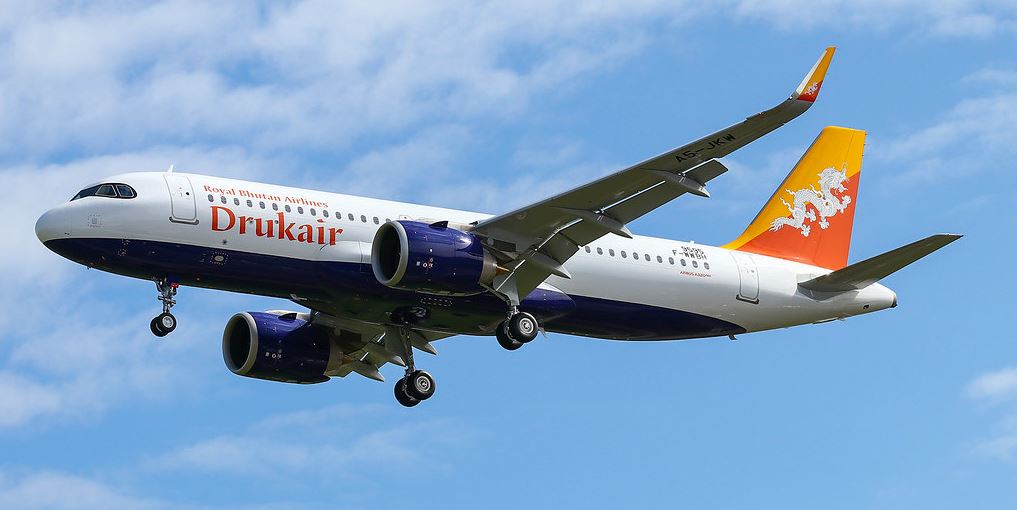
The Bhutanese flag carrier opened up the big blue sky of the country by inaugurating commercial air services on February 11, 1983. Drukair launched its first-ever scheduled revenue flight between Paro and Kolkata with an 18-seat Dornier 228-200.
The carrier made a modest beginning by offering twice-weekly services on the Paro-Kolkata route. The second Dornier twin turbo propeller aircraft entered Drukair’s scheduled service on October 11, 1983. Both STOL utility aircraft could operate flights at Paro despite the airport having minimal infrastructure. When Drukair commenced its service, Paro Airport hosted a runway, a two-room ATC building, and a departure lounge.
In 1986, Drukair extended its overseas operation to Dhaka, making it Bhutan’s second international destination.
Jet Era
In late 1987, the royal government of Bhutan placed an order for a BAe 146-100 STOL regional jet with British Aerospace. Drukair leaped into the jet age by taking the delivery of a BAe-146 series 100 aircraft on November 21, 1988.
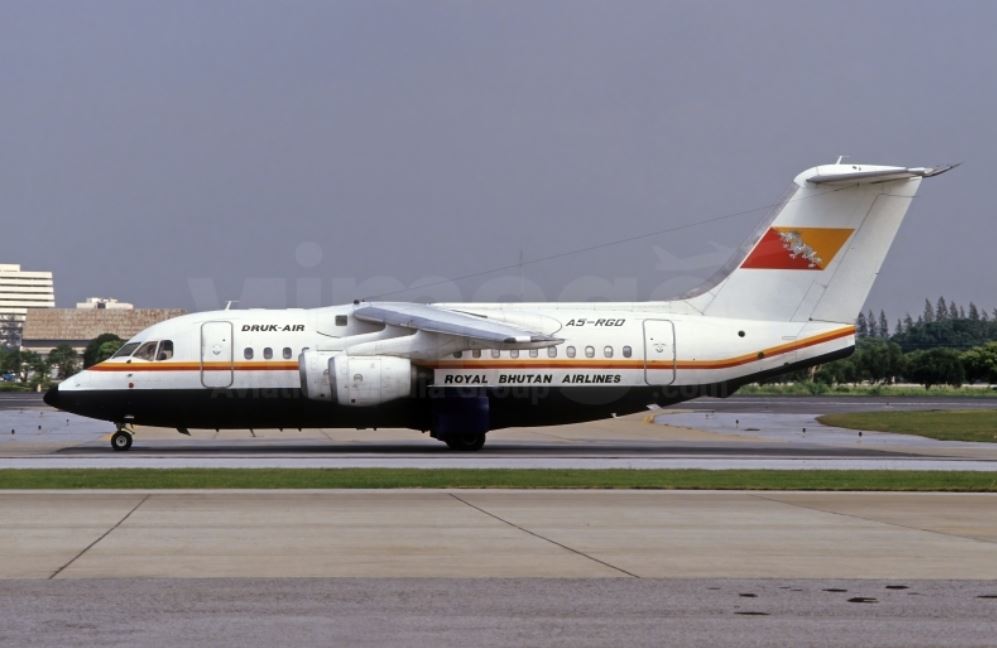
In the late 1980s, Drukair entered the competitive international aviation market by extending air services to multiple destinations. The arrival of the BAe 146 enabled the carrier to stretch its network to link Paro with other South Asian capitals. Drukair bolstered its route map by inaugurating flights to Delhi and Bangkok on November 26, 1988, and January 28, 1989. The flagship airline also established air links with Nepal and launched its flight to Kathmandu on February 18, 1989.
Notable achievements in the 1990s
The 1990s was somehow a period of reforms for the Paro-based carrier. In this decade, it launched a new luxury section dubbed ‘Executive Class,’ released its first in-flight magazine, developed a new reservation software, etc.
The highlights of Drukair’s achievements in the 1990s include:
- Acquisition of second Bae-146 in December 1992
- Introduction of premium Royal Druk ‘Executive Class’ on November 11, 1993
- Release of the first in-flight magazine dubbed ‘Tashi Delek’ in 1995
- Inauguration of a new commercial route to Yangon, the capital of Myanmar, in 1996
- Adoption of new reservation software in 1997
- Resumption of scheduled flights to Bangladeshi capital Dhaka
2000s-the era of expansion and growth
In the 2000s, Drukair switched its airliner of choice to the 114-seat Airbus A319-115 aircraft. The Paro-based carrier signed an MOU with the European manufacturer to purchase two CFM56-5B engine-powered A319s in July 2003. The first 118-seat A319 arrived in the Kingdom of Bhutan on October 19, 2004, becoming the largest airliner ever touching down at Paro Airport. The Bhutanese national airline deployed it on commercial service on October 31, 2003, and acquired its second A319 in December 2004. Both A319s served as replacements for the 2 BAe146s, enabling Drukair to enhance capacity and open up new direct routes.
Bhutan’s new air service agreement (ASA) with India paved a path for the carrier to serve new Indian cities. As per the ASA, Drukair could operate 49 weekly flights between two countries and offer services to the new cities of Mumbai, Chennai, and Guwahati.
Also Read: Yesterday Drukair Flight KB 140 made narrow escape
As a part of the effort to introduce domestic services, Druk Air’s domestic helicopter service kicked off in November 2005. It tied up with Nepalese operator Air Dynasty to cater to tourists who preferred chopper services, especially short mountain flights.
Although Drukair reported its first profit in 2007, its finances were wounded by the 2008 global financial crisis. The national airline minimized flight frequencies and raised airfare to offset fuel and operational costs.
Drukair was due to launch its first-ever flight to Bagdogra in West Bengal, India, in April 2009, but the plan flopped. The main reason was the lack of immigration and customs facilities at Bagdogra Airport/Siliguri Airport.
Drukair at present
Drukair is one of two airlines offering air transport services in the landlocked country of Bhutan. The other carrier is Bhutan Airlines, a private company headquartered in Thimpu. Drukair monopolized the commercial air services in Bhutan until Bhutan Airlines commenced its scheduled operations on December 18, 2011.

Currently, Druk Air operates a modest scheduled flight network spanning 13 destinations in six countries within South Asia and Southeast Asia. As far as its fleet is concerned, it touts a humble fleet of four A320 family jets and one ATR42.
Destination served: Where does Drukair fly?
Paro-based Drukair operates scheduled flights to 10 international cities and three domestic cities. Its international route map covers an array of destinations within the South Asian and Southeast Asian region which includes:
- Bagdogra, Delhi, Bodh Gaya, Guwahati, and Kolkata in India
- Kathmandu in Nepal
- Singapore
- Bangkok in Thailand
- Dhaka in Bangladesh
The Bhutanese flag carrier also serves Chattrapati Shivaji Maharaj International Airport in Mumbai on a seasonal basis.
Domestically, the carrier uses its Paro base to serve Bumthang Airport, Geluphu Airport, and Yomphulla Airport.
In the coming days, the Royal Government of Bhutan-owned Druk Air seeks to expand its flight network to new international tourist crossroads. Launching new direct routes facilitates the arrival of more foreign travelers to the landlocked country.
As a national flag carrier, Drukair has been instrumental in opening the once-isolated country to the world. Many international tourists rely on Drukair’s air links to enter South Asia’s most exclusive travel destination. In the eastern Himalayas, Bhutan is mostly mountainous and surrounded by a wall of towering mountains. Due to its steep and high mountainous terrain, aviation plays a greater than-average role in the landlocked country’s transport mix. Aviation is a gateway into the tiny Himalayan kingdom. Drukair has propelled the kingdom’s march toward modernization and made Bhutan accessible to high-spending/quality tourists.
Fleet of Drukair: How many planes does Drukair have?
The current systemwide fleet of Bhutan-based Drukair consists of 3 Airbus A319-100s, 1 Airbus A320neo, and 1 ATR 42-600.

Bhutan’s national airline welcomed its third Airbus A319 equipped with fuel-saving Sharklets on September 1, 2012. All three A319s can carry 118 passengers in a two-class setup, i.e., business and economy classes. Drukair’s A319 business cabin is set up in a 2-2 configuration with 16 spacious seats spread across four rows.
Drukair took delivery of its Airbus A320neo (registered A5-JFK) to complement its fleet of three A319s on March 19, 2020. The arrival of the new jet coincided with the outbreak of the COVID-19 pandemic, which halted global air travel. However, the Airbus A320neo proved useful for the airline by operating long-haul repatriation flights from the Middle Eastern region.
In addition to four Airbus A320 family jets, Drukair operates a regional airliner ATR 42-600 (registered JNW). Powered by two PW120s, the high-wing airliner boasts a fuel range of 680 nmi and a cruise speed of 289 kn. Drukair’s ATR accommodates 40 passengers (8 business + 32 economy class) in the most modern cabin in regional aviation. The national airline deploys its turboprop on domestic routes, delivering customers the most comfortable onboard experience possible.
The base of Drukair: The world-famous Paro Airport
Drukair concentrates its flight operations from Paro Airport, the single-runway airport serving Thimpu and Paro. Flying through Paro Airport is a hair-raising, spine-chilling plane experience for passengers. The airport is located within a deep valley surrounded by peaks as high as 5500m (18,000 ft). Flying into Paro Airport demands courage and precision as pilots must wind through dozens of houses across the hillside to land there.
The 7,431-feet long asphalt runway lies 2,224 meters above sea level. The extreme geography surrounding it and its small size makes Paro Runway one of the most challenging and potentially dangerous runways. Given Paro’s complexity of takeoff and landings, very few pilots are qualified to operate there.
Pilots flying into Paro Airport make the manual by-daylight-only approach without radar assistance. They operate flights under visual meteorological conditions and check the visual landmarks and the runway before approaching. Flights often get diverted or canceled in inclement weather conditions, such as clouds and fog.

